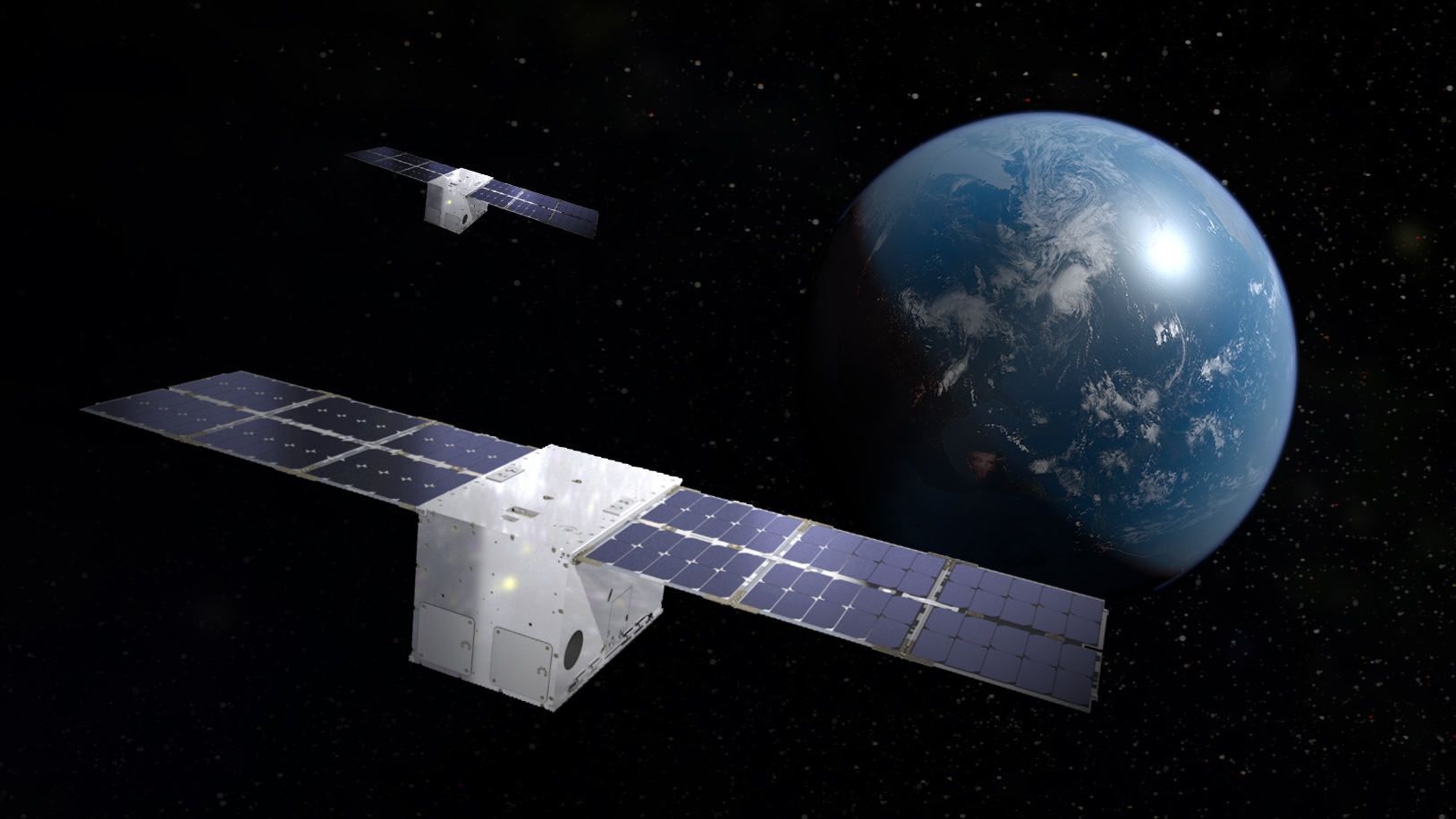
Lockheed Martin In-space Upgrade Satellite System (LINUSS) is a pair of CubeSats testing algorithms to enable highly precise maneuvering. (Lockheed Martin)
SPACE SYMPOSIUM — Lockheed Martin is developing technologies to underpin a future on-orbit servicing business for customers including the Space Force, with a pair of CubeSats now demonstrating what the company called highly precise maneuvering capabilities for Air Force Research Laboratory.
Karla Brown, program manager for the demonstration satellites at Lockheed Martin Space, told Breaking Defense today the company has a Cooperative Research and Development Agreement (CRADA) with AFRL for the project. And while Lockheed Martin built the satellites and is operating them using its own money, Brown said at an earlier roundtable that the Space Force funded their ride to geosynchronous orbit last November on its USSF-44 mission.
The shoe-box sized (12U) satellites, called Lockheed Martin In-space Upgrade Satellite System or LINUSS for short, use a Terran Orbital bus and are part of Lockheed Martin’s LM-50 “family” of space vehicles. Testing of the LINUSS CubeSats began in January.
Brown said that testing and demonstrations will continue for “the lifetime of the satellites,” which initially was projected to be about a year, but given current performance rates may end up being longer. The determinant, she said, will be how quickly radiation in the GEO belt degrades their subsystems.
AFRL over the past six months or so has been expanding collaboration with commercial industry on rendezvous and proximity operations technologies to inspect, repair and refuel satellites on orbit. AFRL’s Tristan Griffith told Breaking Defense back in December that the Space Force is particularly interested for how these capabilities can be applied to extend the life of satellites designed to keep eyes on adversary spacecraft and potentially dangerous space junk.
Speaking to reporters on the margins of the Space Foundation’s annual Space Symposium in Colorado Springs, Brown said that the two key capabilities LINUSS is maturing are “exquisite algorithms” based on artificial intelligence for guidance to enable high precision maneuvers, and an “advanced computer vision” system.
“The closest proximity that we have imagery of was 400 meters” taken during a pass on Feb. 28, she said. “So we hope, with two viable assets up there, to continue the demonstration to get even closer and continue to prove out those algorithms.”
LINUSS is one of the product lines being championed by Lockheed Martin Space’s new(ish) innovation unit, called Ignite, Dan Tenney, vice president of strategy and business development for Lockheed Martin Space said during the media briefing.
Thus, the CubeSat demonstrations involve reducing risks for other technologies required for satellite servicing and space domain awareness. This includes, for example, the firm’s satellite adapter kit, called the Augmentation System Port Interface (ASPIN), that works like a USB plug to provide both an electric and data interface as well as a docking mechanism that fits onto a host satellite.
The end goal, Brown explained, is to develop a full-up satellite servicing business for commercial, civil and military customers.
“Our mission is really to fill our customers’ needs to be able to upgrade and service vehicles on orbit. This need is across all sectors of space, from civil, commercial and military space. Lockheed Martin, with our investment in putting LINUSS in space and demonstrating what we’ve demonstrated, has taken the first step — pioneering toward making that a reality,” she said.






















